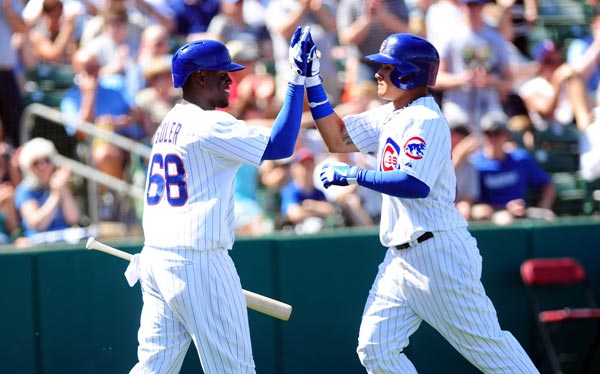The Future Talks: Building the Ultimate Major League Pipeline
Matt Garza was the centerpiece of the most significant Chicago Cubs trade in recent memory and will be a number 2 starter for the next three to four years.
He is also a significant piece in the Cubs' model effort to build a multi-faceted pipeline of talent that could provide a new blueprint for sustainable success by franchises in big markets. While the Cubs have missed on key opportunities to add to their talent pipeline, including on YoenisCespedes, YasielPuig, Yu Darvish, and Hyu Jin Ryu, which could have dramatically accelerated their timetable, they have patiently built a talent pipeline that will build a contender for the remainder of the decade.
The old model, epitomized by the New York Yankees and Boston Red Sox, was to draft and bring up a core of 2-3 star players and then surround them with expensive free agency and trade acquisitions.
The Yankees had Deter Jeter, Jorge Posada, Andy Pettite and Mariano Rivera and won four titles. But their model has gradually collapsed as their players have aged, their talent pipeline has dried up in short-term trades, and their free big money bets on Alex Rodriguez and others have not panned out.
The Cubs' approach is far more multi-faceted and, while we have not seen the ultimate results yet, the current track record appears promising.
Since 2011, when Theo Epstein and Jed Hoyer took control of the Cubs, Chicago has built its talent pipeline though a mix of the draft, savvy trades, the international market, developing existing talent, and strategic free agency signings. They have drafted Kris Bryant and Albert Almora, future cornerstones at third base and centerfield. They acquired Jorge Soler and Juan Carlos Panaguia, their future right fielder and No. 2 starter, in the international market. They mixed in savvy trades as well, including of reliever Sean Marshall for now 26 year old all-star pitcher Travis Wood.

The Cubs have taken that three-pronged approach and combined it with astute use of big market funds and development of talent already on hand. Javier Baez looks like their second baseman of the future and Dillon Maples has ace potential. Best, the team took Jeff Samarzija from castoff status to potential staff ace of the future. Mixed in have been David DeJesus, Nate Schierholtz, Scott Feldman, and other smart signings that the team has used to reinforce the clubhouse and in trades.
Of course, nothing is perfect. The Cubs sit ten games out of the wildcard; clear sellers at the deadline. YoenisCespedes would look perfect in Chicago's outfield if the Cubs had not backed out and spent even more on bust Edwin Jackson. But, overall, Chicago is moving in an exciting direction and their approach may serve as a model for future big market baseball teams.
What do you think?
We'd love to hear your comments and/or opinions. If you submit them here, other visitors can read them, rate them and comment on them. An e-mail address is not required.
From The Future Talks: Building the Ultimate Major League Pipeline to MLB Baseball Blog | Sports Blog | NFL Football Blog | NCAA Football Blog | NFL Football Archives | College Football Archives | Current Sports Scores | NBA Basketball Blog | NCAA Basketball Blog | NBA Basketball Archives | NCAA Basketball Archives | Current Sports Scores | College Baseball Blog | MLB Baseball Archives | Fantasy Football | Fantasy Basketball | Fantasy Baseball | The Best Sportswriter Contest | Sports Trivia Questions | Other Sports | Soccer Archives | Olympics Archives | Stupid Athletes Archives | Other Archives | Sports Basics | Top Sports Blogs | Best Sports Pictures | The Best Sports Videos | Best Current Sports News | The Best Sports Blog Podcasts | Football Forum | Basketball Forum | Baseball Forum | NFL Football Store | NBA Basketball Store | MLB Baseball Store | NCAA Football Store | NCAA Basketball Store | NCAA Baseball Store | Fatheads | NFL Football Tickets | NBA Basketball Tickets | MLB Baseball Tickets | NCAA Football Tickets | NCAA Basketball Tickets | NCAA Baseball Tickets | Sports Kindle E-Books | Best Sports Blog Books |
About Us | Contact Us | Site Search | Advertise | Terms of Use |






New! Facebook Comments
Leave a comment about this article in the box below and share it with your Facebook friends.